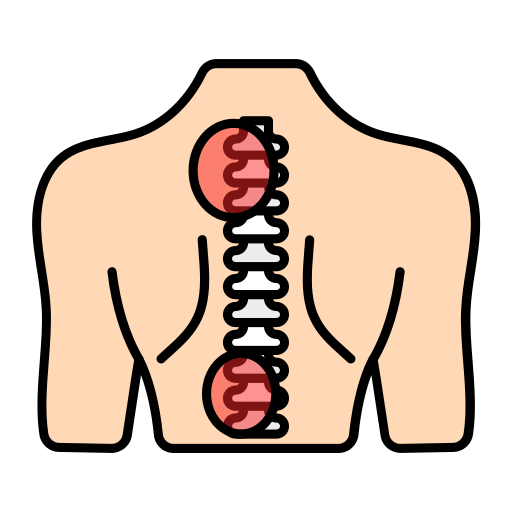
Spine Surgery
Starting At $2800
Spine Surgery involves advanced surgical techniques to treat a range of spinal disorders, including herniated discs, spinal stenosis, scoliosis, and injuries. Designed to relieve pain, improve mobility, and restore function, spine surgery is an option when conservative treatments have not been effective. With advancements like minimally invasive surgery and robotic-assisted procedures, patients experience faster recovery times, reduced pain, and smaller scars. Whether addressing conditions in the cervical, thoracic, or lumbar regions, spine surgery offers a pathway to enhanced quality of life under the care of skilled surgeons and a multidisciplinary support team.

A Laminectomy is a surgical procedure that relieves pressure on the spinal cord and nerves by removing part of the vertebra, specifically the lamina, which is the back portion of the spinal bone. This procedure is often recommended for individuals experiencing pain, numbness, or weakness due to spinal stenosis, herniated discs, or other conditions that narrow the spinal canal and compress nerves.
A Laminotomy is a surgical procedure designed to relieve pressure on the spinal nerves by removing a small portion of the lamina, which is the bony covering of the spinal canal. This procedure is less invasive than a full laminectomy and is typically recommended for patients suffering from conditions like spinal stenosis, herniated discs, or bone spurs that cause nerve compression.
Microdiscectomy is a minimally invasive surgical procedure used to remove a portion of a herniated disc in the spine that is pressing on a nerve, causing pain, numbness, or weakness in the back or legs. This procedure is often performed for patients with a herniated or ruptured disc in the lumbar (lower back) or cervical (neck) spine that hasn’t responded to conservative treatments like physical therapy or medications.
A Foraminotomy is a surgical procedure aimed at relieving pressure on the spinal nerves by enlarging the foramen—the small openings in the spine where nerve roots exit the spinal canal. When these openings become narrowed, often due to conditions like spinal stenosis, bone spurs, or a herniated disc, it can compress the nerves, causing pain, numbness, and weakness. A foraminotomy is performed to create more space for the nerves and alleviate these symptoms.
A Corpectomy is a type of spinal surgery in which a portion of the vertebral body (the thick, cylindrical part of the vertebra) is removed. This procedure is typically performed when there is significant damage or compression of the spinal cord or nerve roots due to conditions like spinal tumors, spinal fractures, herniated discs, or spinal infections. The primary goal of a corpectomy is to relieve pressure on the spinal cord and nerves, restore stability to the spine, and prevent further neurological damage.
Osteophyte Removal is a surgical procedure designed to remove bone spurs, also known as osteophytes, which are abnormal bony growths that develop along the edges of bones, often in the joints or the spine. These bone spurs can cause pain, stiffness, or nerve compression if they press against nearby tissues, such as muscles, nerves, or tendons.
Percutaneous Laser Disc Decompression (PLDD) is a minimally invasive procedure used to treat herniated or bulging discs in the spine that are causing pain, numbness, or weakness due to nerve compression. The procedure involves the use of laser energy to reduce the size of the disc and relieve pressure on the nerves, providing pain relief and improving mobility. It is often recommended for patients with lumbar (lower back) or cervical (neck) disc problems that have not responded to conservative treatments such as physical therapy, medications, or injections.
| Spinal Decompression Surgery | Treatment Cost In USD |
| Laminectomy Removal of the lamina (the back part of the vertebra that covers the spinal canal) to create more space for the spinal cord or nerves. It is commonly used to treat spinal stenosis. | 3,300 |
| Laminotomy Removal of a portion of the lamina, often just one side, to relieve pressure while preserving more of the vertebra’s structure. | 3,300 |
| Microdiscectomy Removal of part or all of a herniated or bulging disc to relieve pressure on a nerve. This can be performed as a microdiscectomy, using a minimally invasive technique with smaller incisions. | 2,900 |
| Foraminotomy Widening of the foramen (the opening where nerve roots exit the spinal column) to relieve nerve compression. | 2,900 |
| Corpectomy Removal of a vertebral body and adjacent intervertebral discs, usually replaced with a bone graft or a spacer and often used in cases of severe spinal compression. | 2,900 |
| Osteophyte Removal Removal of bone spurs (osteophytes) that are causing nerve compression. | 4,200 |
| Percutaneous Laser Disc Decompression (PLDD) A minimally invasive procedure that uses a laser to vaporize part of a herniated disc, reducing its size and relieving pressure. | 2,800 |
